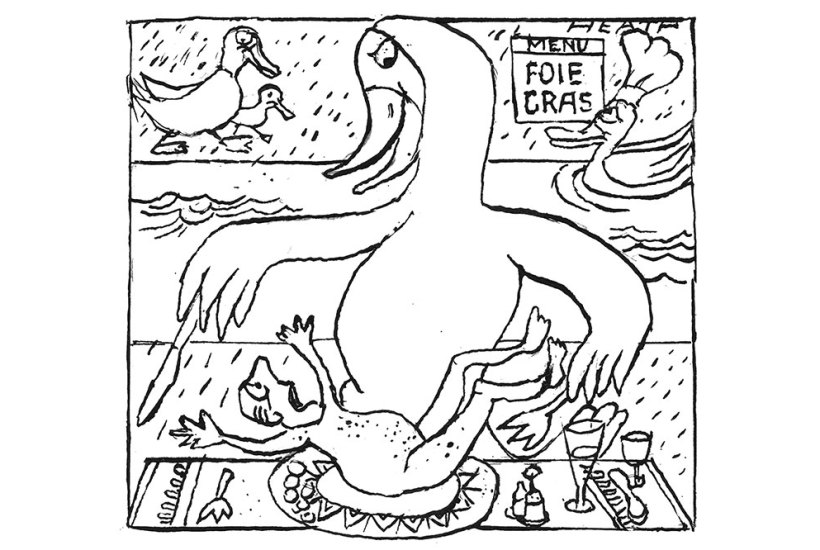Apoll shows that nine out of ten Brits want to ban the import of foie gras. Crumbs! Haven’t they got anything more important to worry about? The Times says about 200 tons are imported from Europe every year. I only wish some would come my way. Though the same article says Waitrose stocks this greatest of all delicacies, I can’t remember seeing it in our local branch.
The trouble is that the campaign against these large, buttery duck livers (goose liver is rare) is based on Yahoo-worthy ignorance and antique disinformation, such as the fading photographs that used to circulate of webbed feet nailed to the shed floor. While I haven’t been able to discover the extent of industrial foie gras production, what one encounters in France is mostly artisanal, produced on farms, not factories.
As for ‘force-feeding’, it all depends on what you think this means. Certainly, the birds are encouraged to over-eat; gorging themselves in the autumn when there is a glut of food is the way these waterfowl prepare themselves for migration in nature. But I have witnessed the gavage, as the feeding process is called. I’m sorry to distress the anti-foie gras fanatics, but the birds are conditioned to queue up in an orderly fashion to swallow the feeding tube. They are not distressed, because ducks and geese do not have a gag reflex. The moistened grains that are the birds’ breakfast, lunch and dinner are pushed through a sort of food mill into the metal tube, direct to the stomach. If they could speak, they might complain of the monotony of their diet.
They are kept in relatively capacious pens, as individual small pens are being phased out in the EU. And far from being handled sadistically by peasant women, the birds are petted as they receive their rations from the farmers’ wives. Using force to feed them would obviously be counter-productive, as the object is to pack in the food without damage to the birds’ beaks or organs.
Is there cruelty involved? Not in the gavage itself, though no animal could be said to enjoy having an enlarged, fatty liver. How much this subtracts from the quality of the birds’ relatively short life is a question I leave to philosophers/zoologists. Are we justified in using these over-fed ducks as food for ourselves? Well, mankind has done so since antiquity. Foie gras was a luxurious delicacy for the Egyptians, the Romans and the former Hebrew slaves. Moreover, the rest of the bird is not squandered: it’s not just the liver that is eaten. Particularly in south-western France, the breasts of foie gras ducks are a cherished menu item, and the legs lend themselves to making delicious confit de canard.
Ideological vegetarians and vegans have a case for not eating foie gras, but then they have a case for not eating anything that has a face or a mother. Meat is murder and all that.
But I wish the people who spend so much effort trying to ban foie gras would transfer their hysteria to some less trivial causes. Genuine foie gras is very expensive. Could it be that opposition to producing, selling and consuming it has some element of class war about it?
Got something to add? Join the discussion and comment below.
Get 10 issues for just $10
Subscribe to The Spectator Australia today for the next 10 magazine issues, plus full online access, for just $10.
You might disagree with half of it, but you’ll enjoy reading all of it. Try your first month for free, then just $2 a week for the remainder of your first year.








Comments
Don't miss out
Join the conversation with other Spectator Australia readers. Subscribe to leave a comment.
SUBSCRIBEAlready a subscriber? Log in